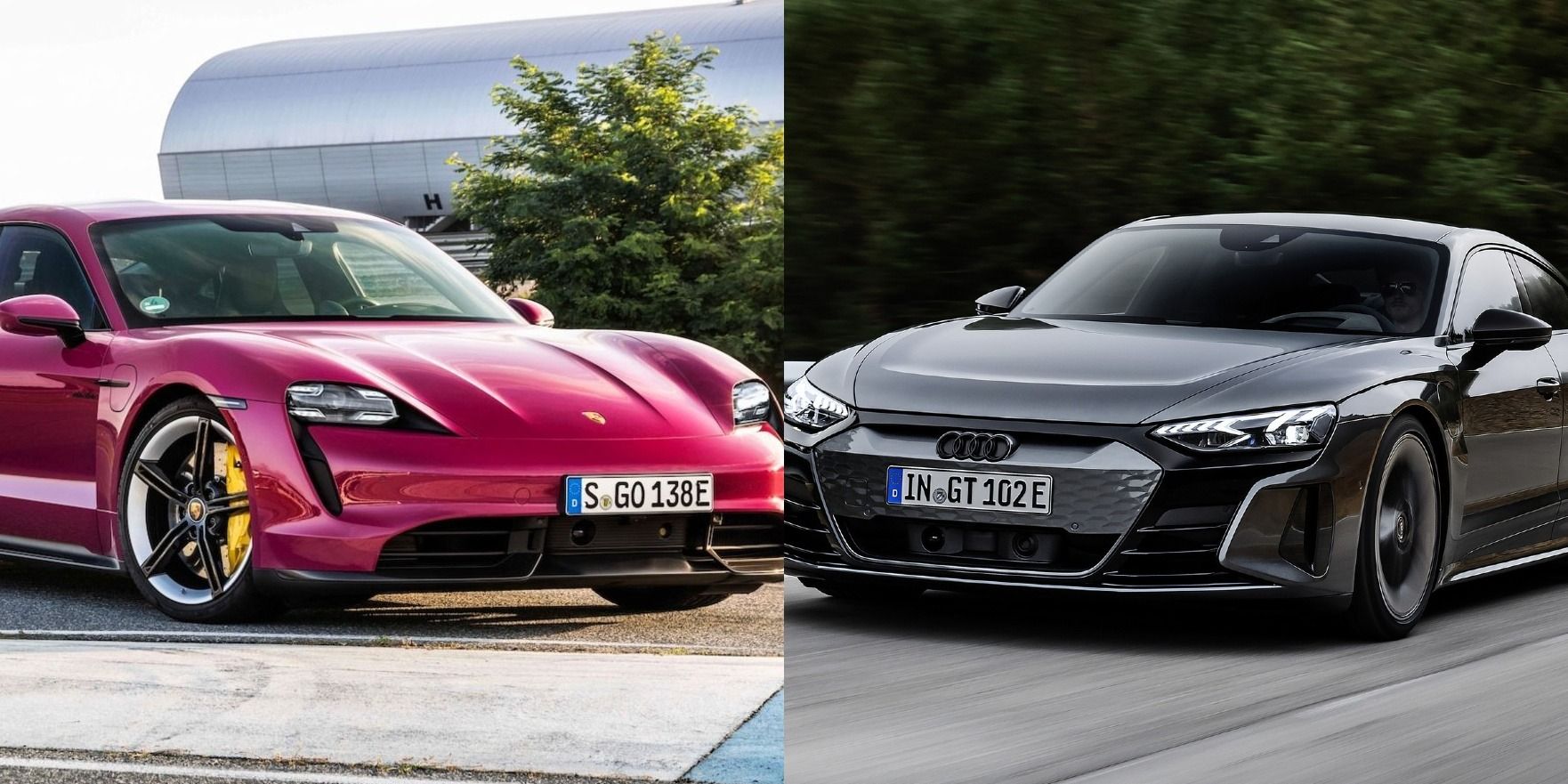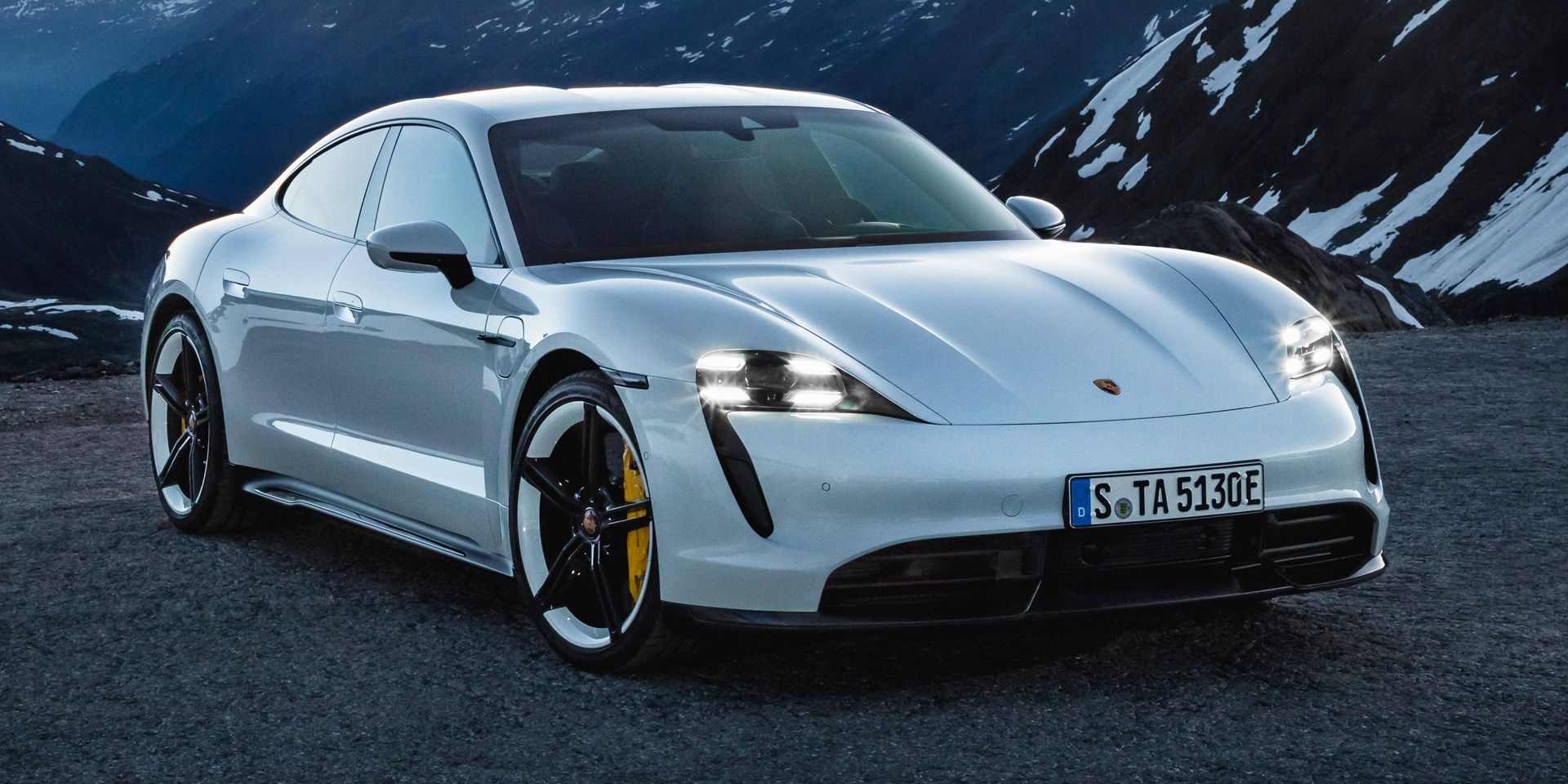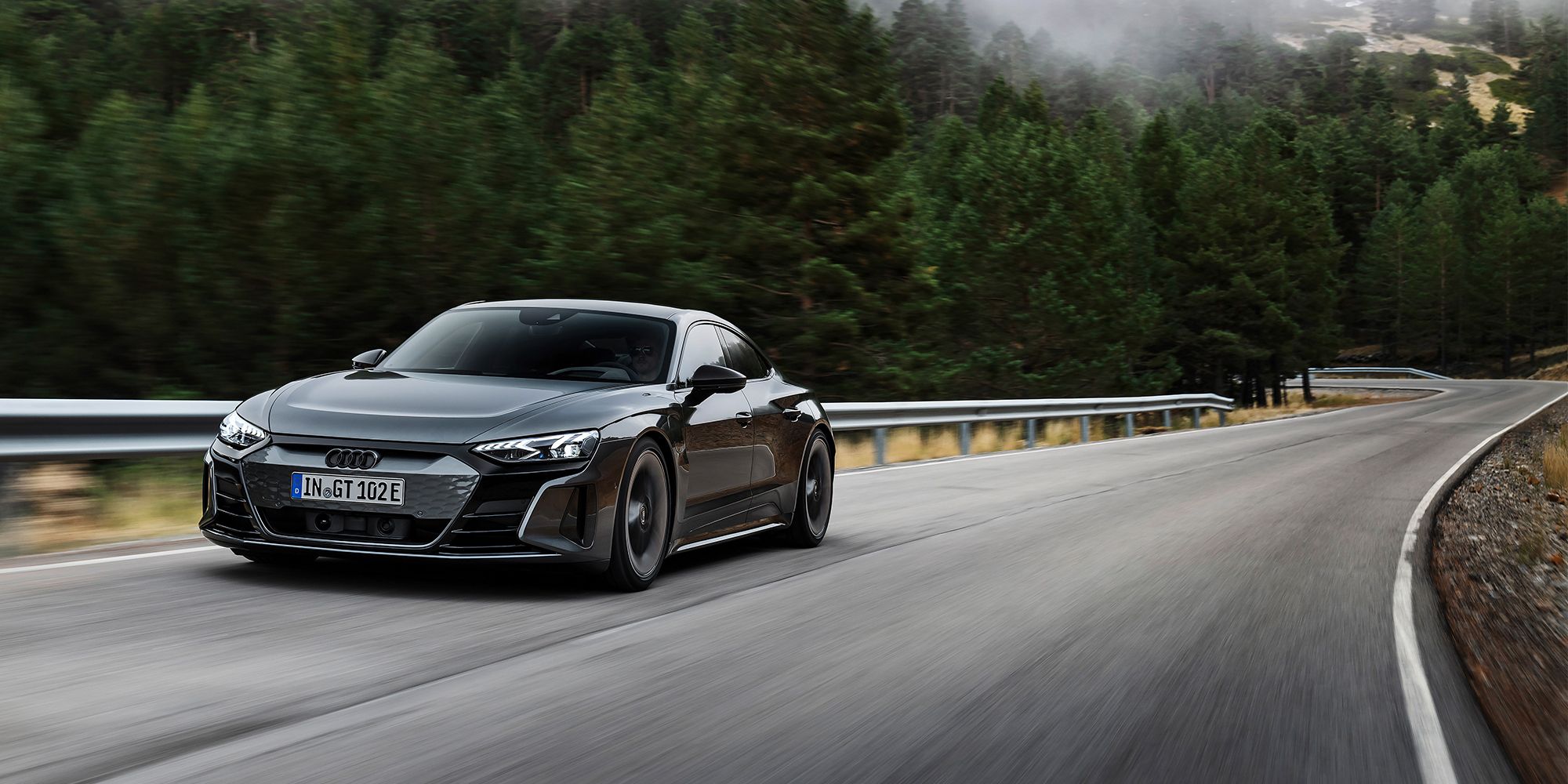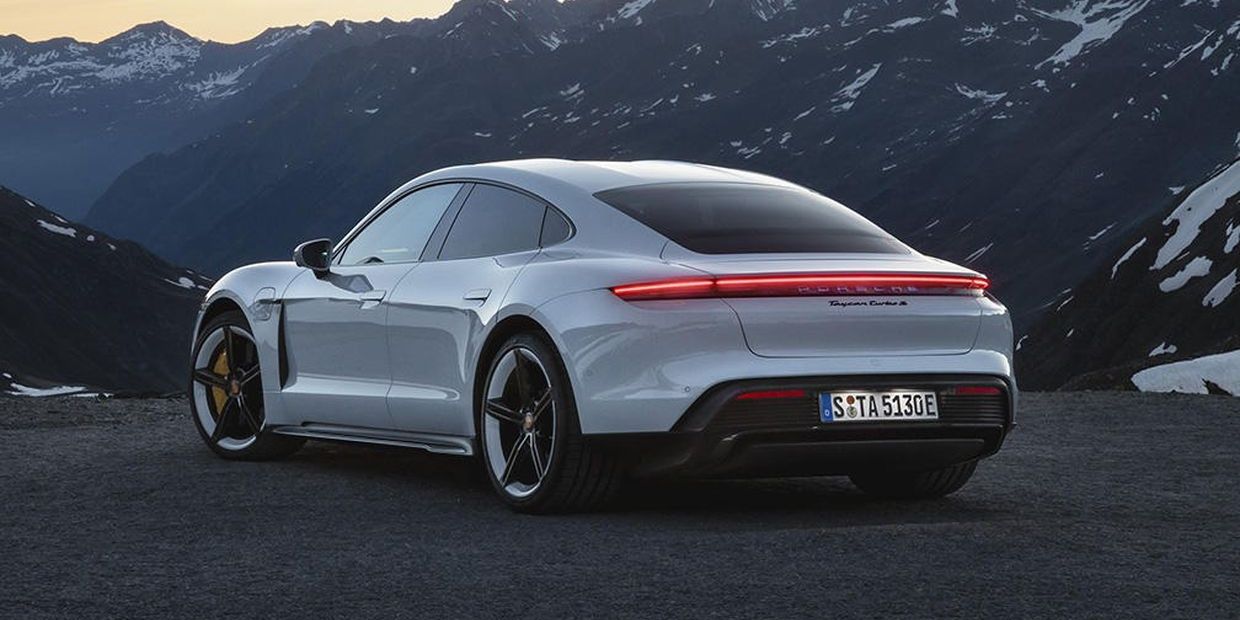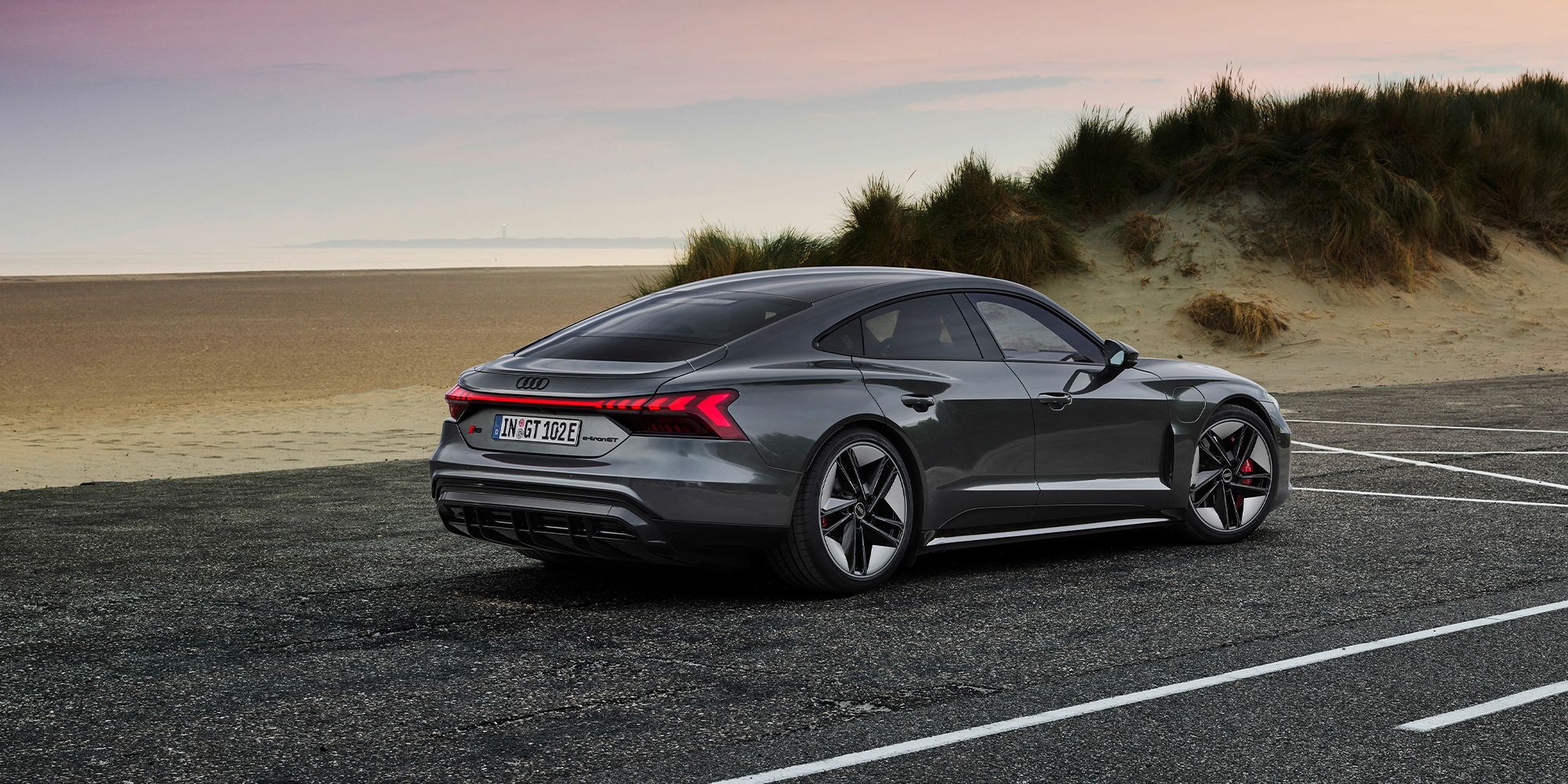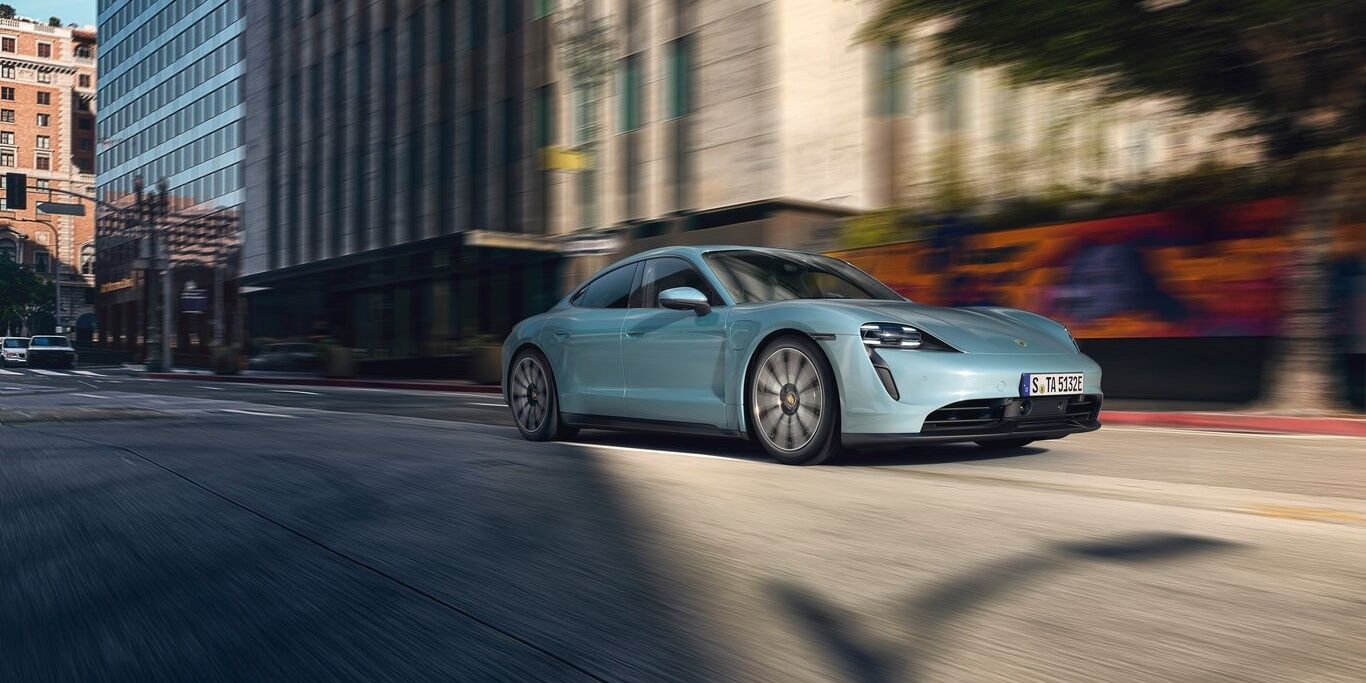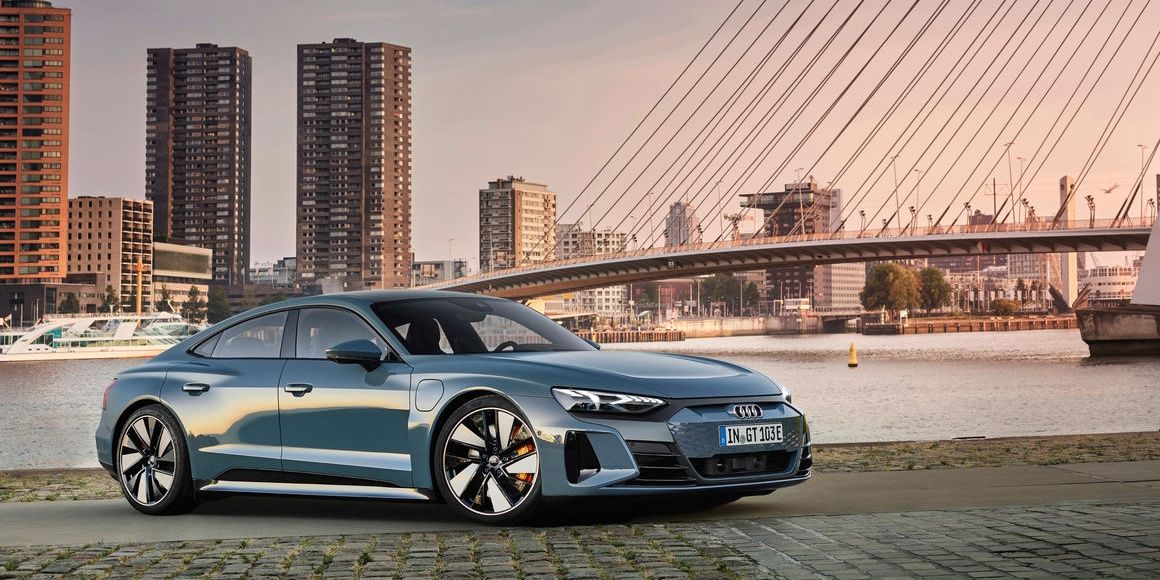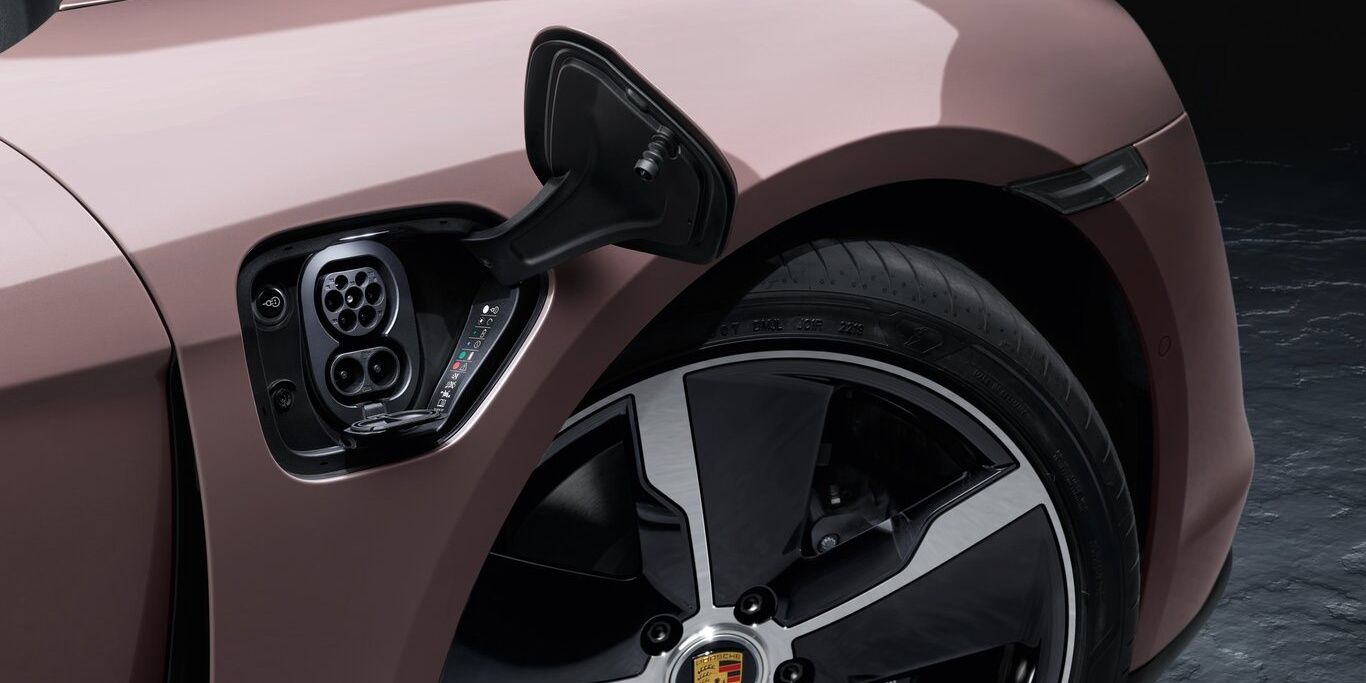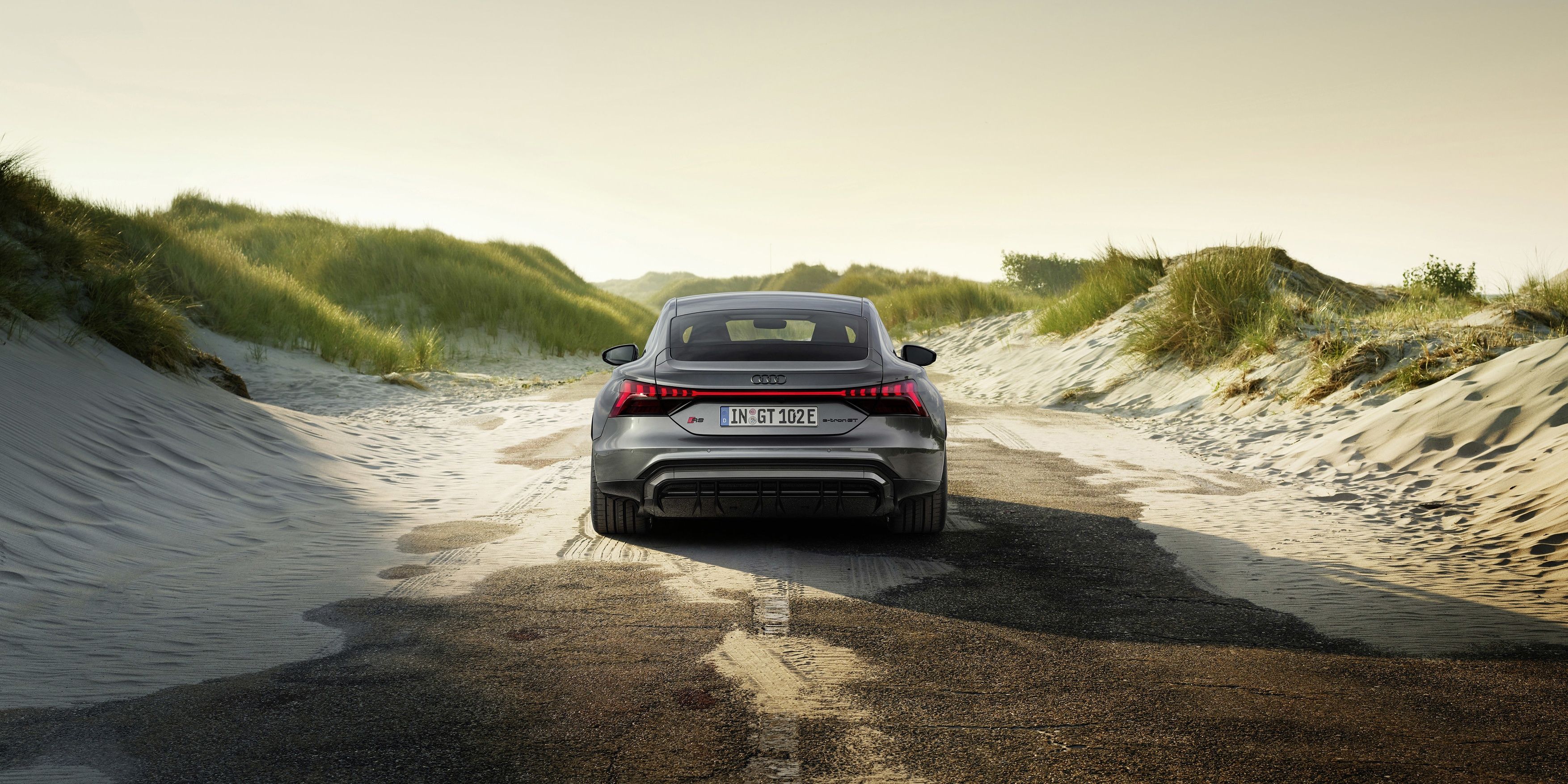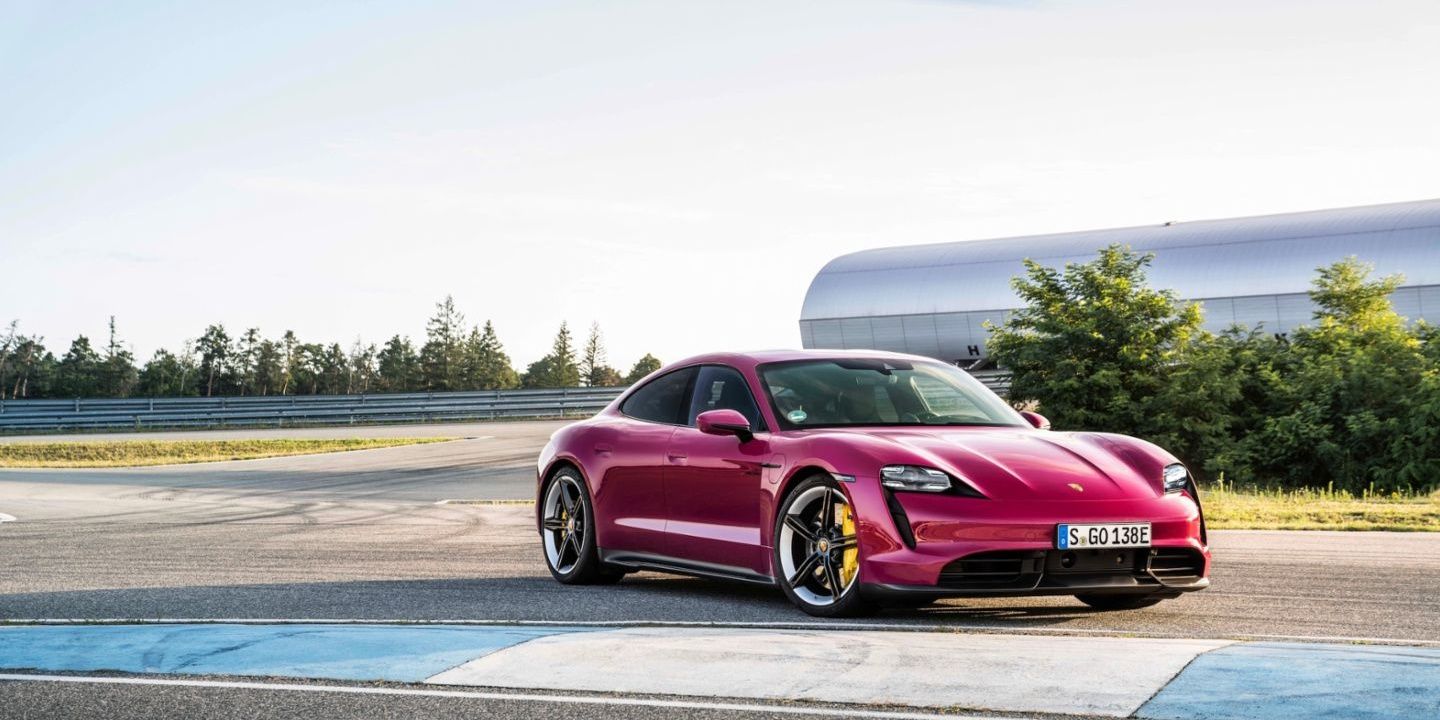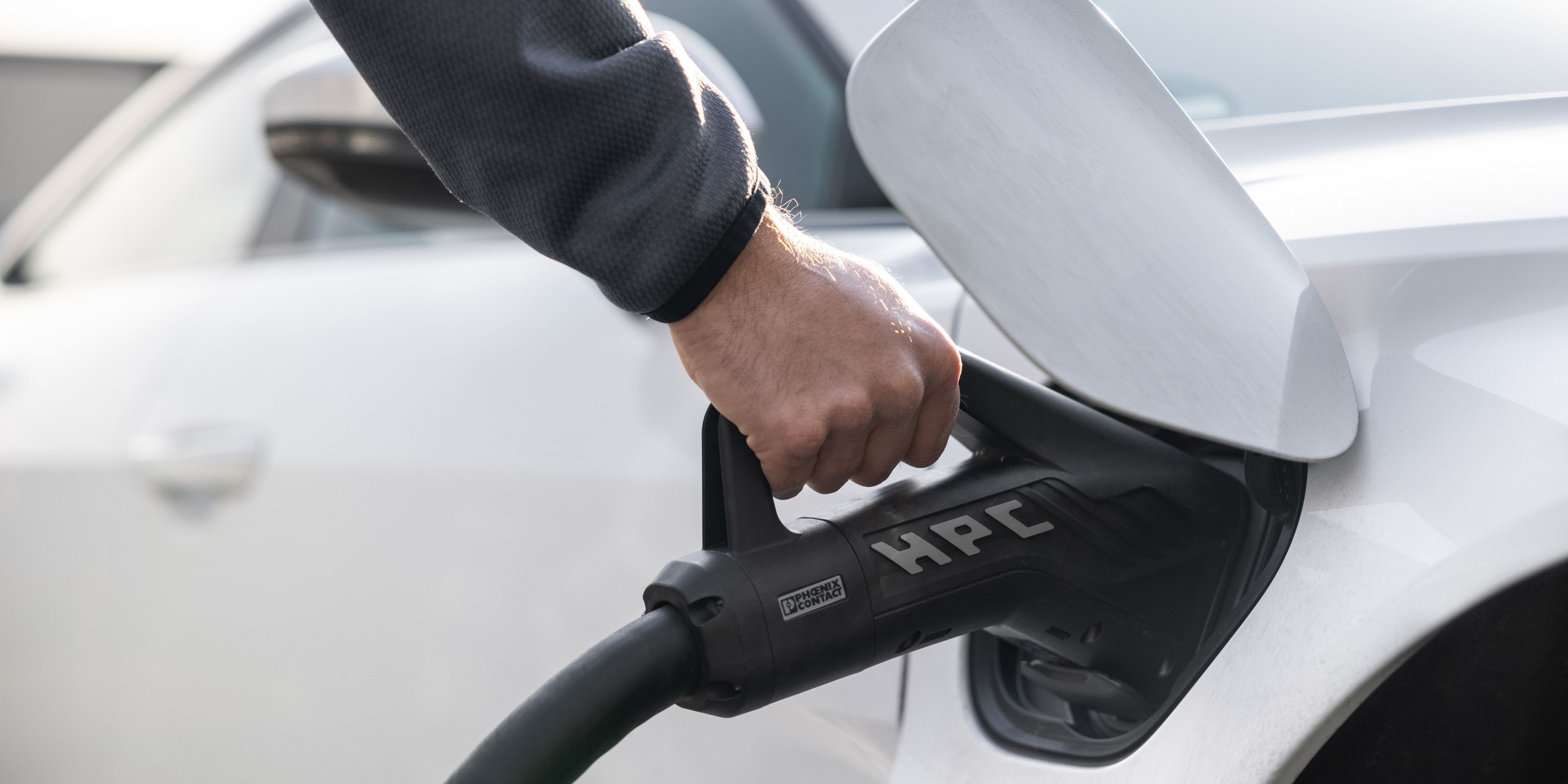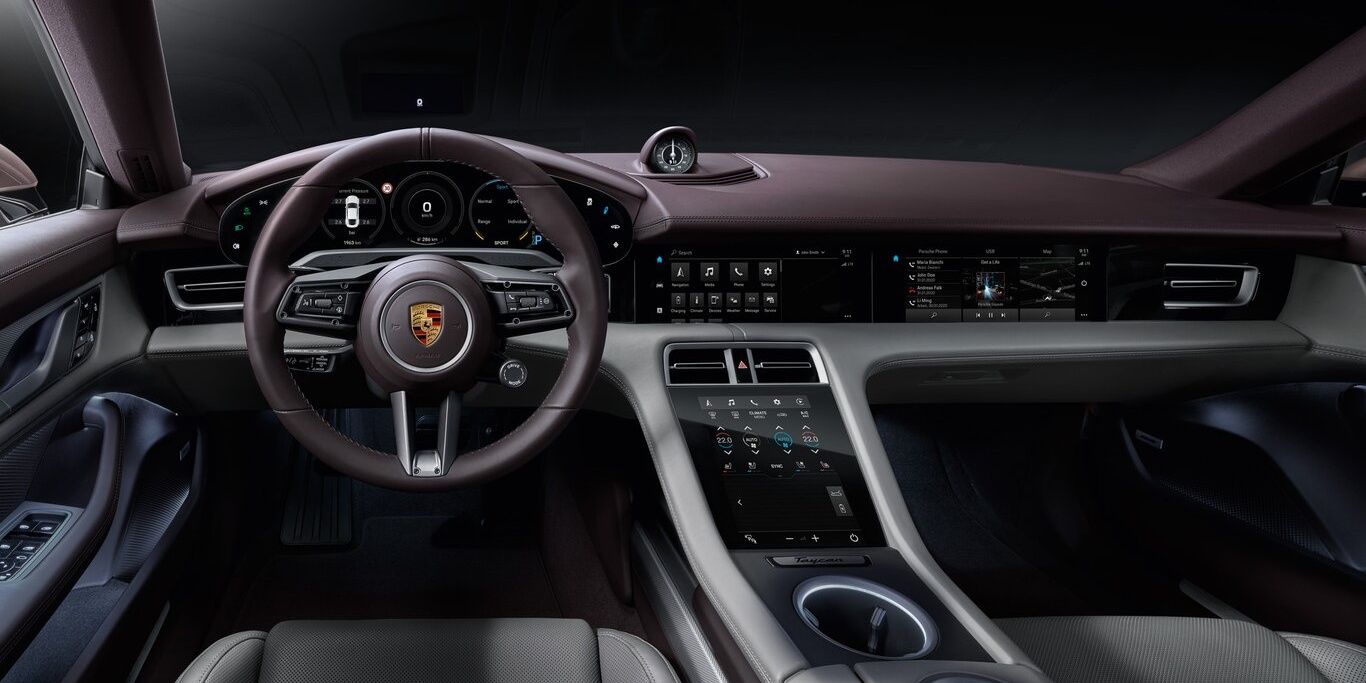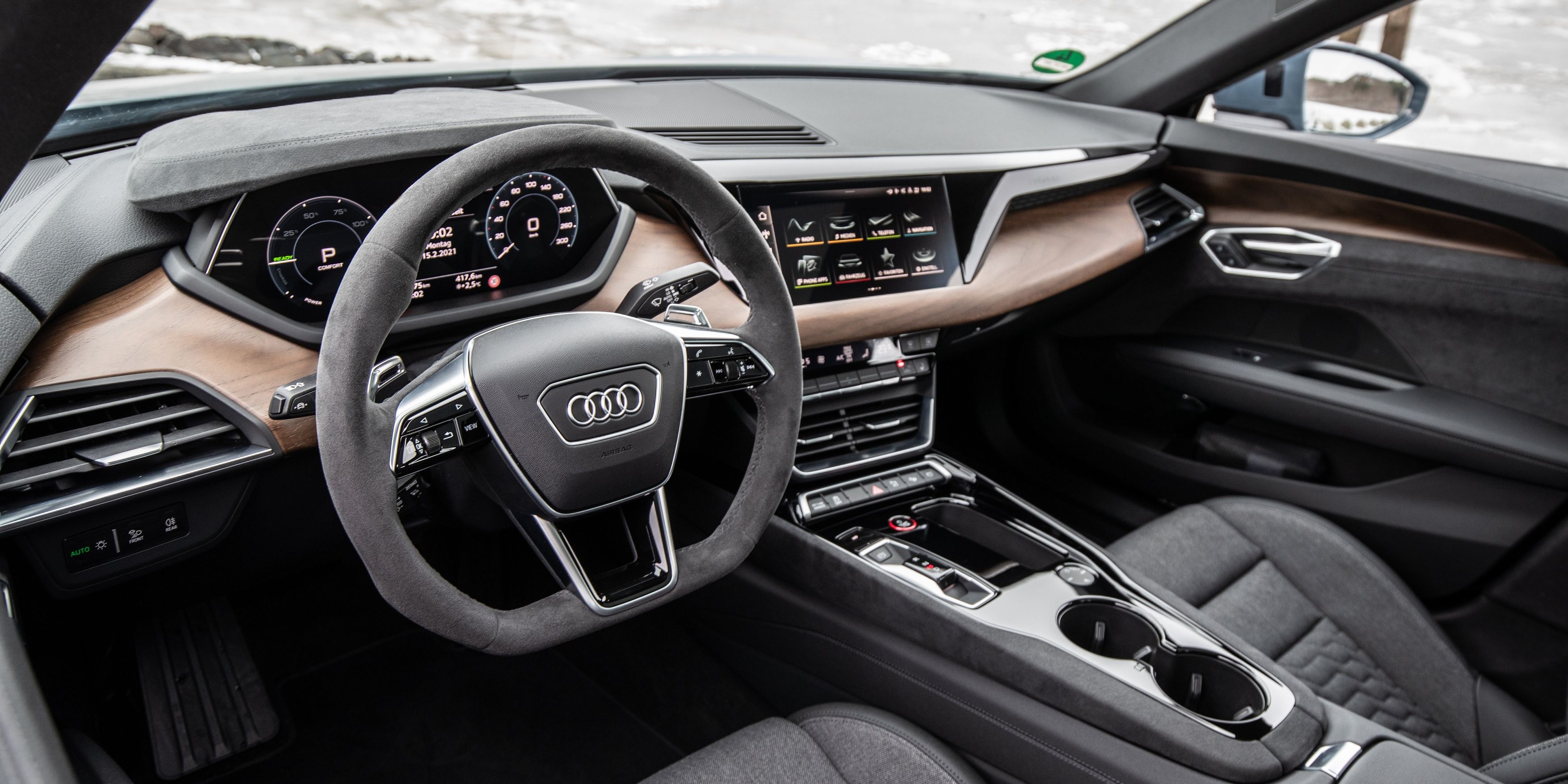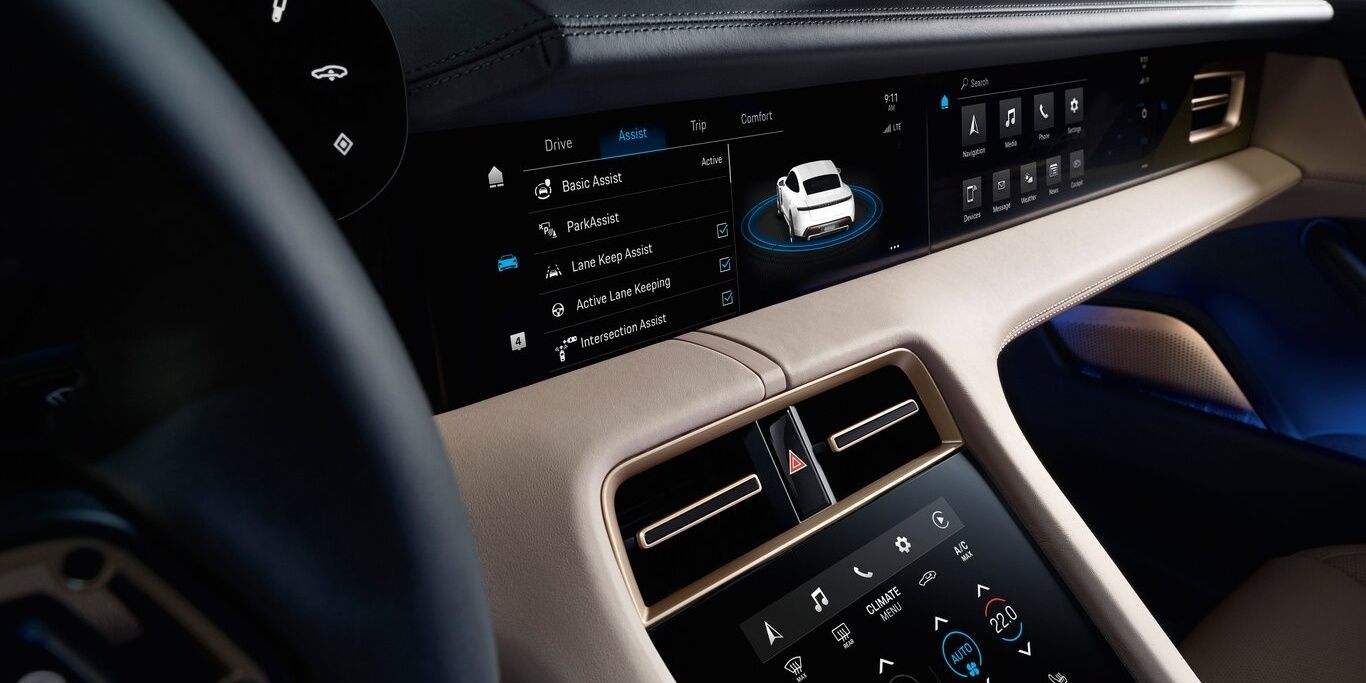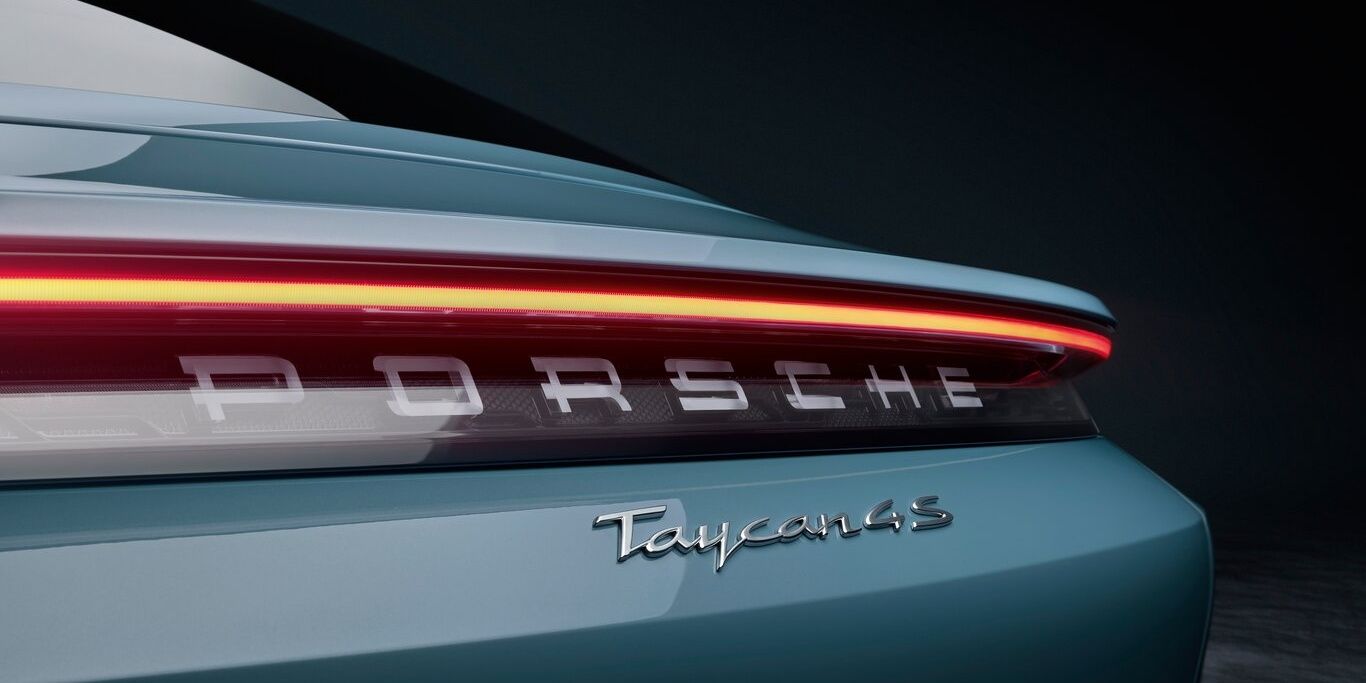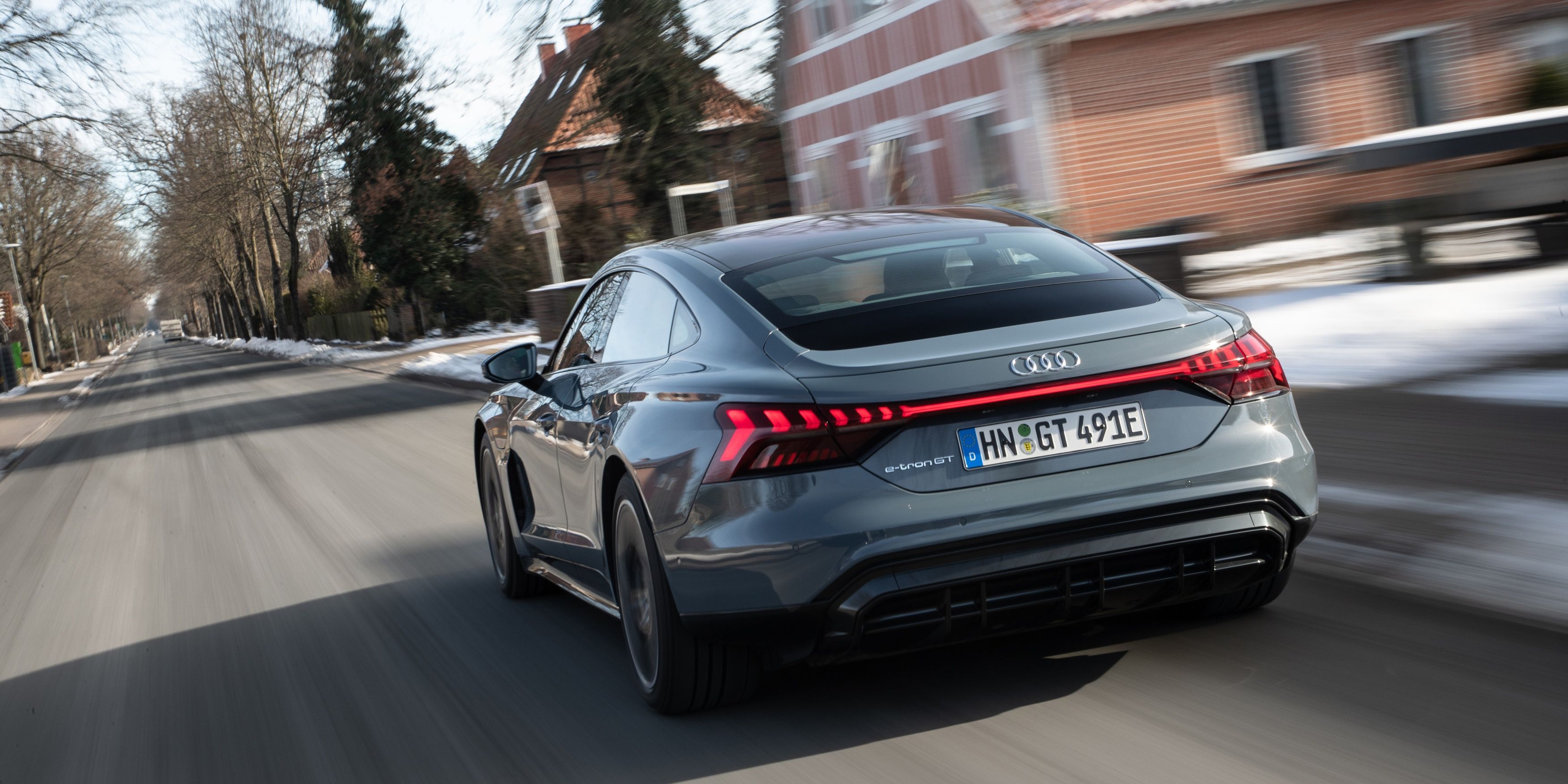Things are starting to get heated in the electric performance car world. Just a few years ago, Tesla was really the only serious player in the sector, but now several other major manufacturers are dropping their debut EV sports cars all at once. Porsche and Audi are two such manufacturers, with their Taycan and e-tron GT respectively. The Taycan has been out for close to two years, but the e-tron GT is very much a fresh release, with the first deliveries only reaching customers a few months ago.
What's interesting about the two EVs is that they're based off the same platform, and they share around 40% of their internal components. But, despite that, they're quite different both in their technical specifications and in the overall market demographic they cater to. To see exactly which one has the edge, let's break down the Taycan and the e-tron GT into the key areas that potential buyers need to know about.
8 The Taycan Wins On Power
One of the defining factors of the new era of EV performance cars is how much they've revolutionized power delivery. Modern electric passenger vehicles can deliver horsepower figures and top speeds that were previously only attainable in supercars. Both the e-tron GT and the Taycan sport an impressive spec sheet, with the top-spec "RS" trim e-tron GT making 590 hp and the top Taycan making a whopping 750 hp.
It's worth remembering that these figures are only for top-spec cars though: the non-RS e-tron GT sports a still impressive figure of 469 hp, which gives it a 0-62 mph time of 4.1 seconds. The base level Taycan sports an relatively modest rating of 321 hp, although it can still pull a 0-62 mph time of 5.2 seconds.
7 The Taycan Boasts Marginally Better Handling
As buyers would expect from such prestigious manufacturers, both cars handle excellently, and there's not a huge amount of difference between them. Top Gear recently drove the entry-level Taycan and the RS e-tron GT and found that really, the extra power made no difference on the road, as even the 'slowest' variants offer more power than drivers will ever need on a public highway.
Their comparison suggested that the Taycan was the marginally sportier of the two cars, with less body roll and more focused steering. In particular, TG felt the base Taycan was actually better to drive than the top-spec Turbo S, as it felt closer to a Porsche 911, a car that's long been regarded as one of the best drivers' cars around.
6 Both Cars Win On Style
Style is always a subjective matter, but it seems like the looks of the e-tron GT and Taycan reflect their slightly different customer bases. The e-tron GT is sleek and streamlined, with more than a passing resemblance to the current RS7. In comparison, the Taycan's styling aims to convey speed and power, presumably in an attempt to make the car appeal to Porsche's traditional clientele.
There's also badge prestige to consider: as much as Audi would like to think differently, most buyers will find a Porsche badge more appealing. There's a significant price overlap between the two cars (we'll get into that later), to the point where the Taycan has a reputational advantage. Simply put, the more image-conscious buyer will nearly always prefer to drive a Porsche over an Audi, especially if they're a similar price.
5 Similar Range
On paper, it seems like both the Porsche and the Audi are seriously down on their competitors when it comes to range, but look a little closer and the numbers seem more comparable. Given how closely related they are, it's no surprise that both cars sport very similar range ratings, somewhere in the region of 220-300 miles depending on the battery pack chosen.
That's way behind the likes of Tesla, who are claiming 402 miles of range on their Model S Long Range Plus. But, Car and Driver's real-world testing showed the base Taycan significantly beating its official range, as they managed 280 miles as opposed to the official 225-mile range. In comparison, a test by InsideEVs found several Tesla models to have notably less real-world range than their official estimates, so it's safe to assume that the Porsche/Audi twins are broadly comparable to their competitors in terms of real-world driving.
4 Fast Charging In Both
Both cars sport an ultra-fast charging option of up to 270 KWh DC, although the base model Taycan can only achieve 225 KWh DC. That shouldn't be an issue though, as most charging stations currently don't support 270 KWh charging anyway, and so there won't be much difference in real-world charging times.
It's difficult to estimate the exact charging times for any given EV, as there's always a number of external variables at play. But, Porsche claim that Taycans with their bigger battery pack can go from 5-80% charge in 22.5 minutes, so it's likely that the e-tron GT will be similar given that both battery packs have the same capacity.
3 Interior
The e-tron GT's cabin is a lot like other high-end Audis, in that it's a very nice place to be in. There's a large range of options for color schemes and materials, including one which is leather-free and uses recycled materials for a more eco-friendly feel.
The Taycan takes a slightly different approach with a more futuristic vibe to its interior. It's still equally customizable, but the layout feels a lot more streamlined and cutting-edge. There are almost no buttons or switches, with nearly every function ported onto a screen, of which there are several on both the driver's and passenger's sides of the cabin.
2 Features
EVs in general are aimed to show manufacturers' capabilities for the future, and so unsurprisingly there's a full suite of assistance and convenience features available in both cars. The e-tron GT is best for audio nerds as there's an optional 16-speaker Bang & Olufsen system available, whereas the Taycan's minimalist touchscreens should please tech fans and potentially woo some buyers away from Tesla.
Both the e-tron GT and Taycan feature the industry-standard regenerative braking technology, although the Taycan's is implemented a little more subtly. The level of regen can be adjusted via paddles on the steering wheel, which lets drivers decide how noticeable they want the feature to be.
1 Price
Pricing is key in any buyer's decision to purchase a car, and there's quite a difference between the Porsche and Audi here. The Taycan starts at $84,050 for the base model, but the e-tron GT will cost a minimum of $99,900. These are prices for the base versions, mind you.
Of course, being a Porsche, there will be plenty of expensive options to add on, but it's hard to argue that the Porsche isn't better value for the dollar, even if the base model has a slightly lower range than the more expensive e-tron. No matter which option buyers go for, both of these EVs are among the best in their field and represent a sector that's sure to grow significantly in the coming years.

